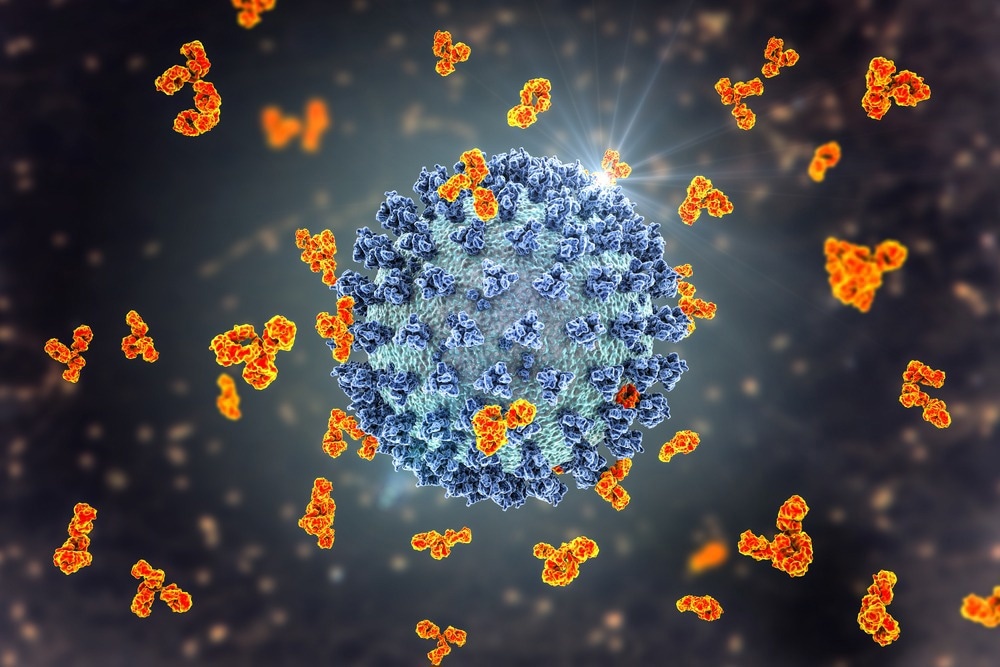
[ad_1]
In a current research printed in PLoS ONE, researchers developed humanized nanobodies that neutralize extreme acute respiratory syndrome coronavirus 2 (SARS-CoV-2).

Background
The coronavirus illness 2019 (COVID-19) pandemic has precipitated a worldwide well being emergency at an unprecedented scale. Consequently, the scientific group responded by quickly growing SARS-CoV-2 vaccines. Though SARS-CoV-2 vaccination has been efficient towards extreme COVID-19 and related hospitalization, there may be potential for the emergence of escape variants.
Due to this fact, there’s a urgent want for inexpensive, high-throughput pipelines to discover efficient anti-SARS-CoV-2 therapeutics. Nanobodies are distinctive heavy-chain solely antibodies in camelids and a few shark species. As anti-viral biologics, nanobodies provide a number of benefits comparable to lengthy shelf life, handy mass manufacturing in prokaryotic methods, and better tissue permeability.
The research and findings
Within the current research, researchers described an environment friendly, speedy technique to design and develop SARS-CoV-2-neutralizing humanized nanobodies. First, phage-displayed nanobody libraries had been ready, ranging from a caplacizumab-derived spine, to ascertain a platform for the speedy discovery of nanobodies.
One spherical of phage panning was carried out towards the SARS-CoV-2 spike S1 area, with two further rounds towards the receptor-binding area (RBD). The authors recognized 13 nanobodies because of panning. Nanobodies had been synthesized and purified by Ni-NTA affinity chromatography and size-exclusion chromatography.
World match modeling revealed that binding affinities in direction of RBD-mFc had been 0.9 nM for RBD-1-1E nanobody and 9.4 nM for RBD-1-2G. RBD-1-2G had an affinity of 6.9 nM to the S1-Fc analyte, a 26.6% enchancment over RBD-mFc. Additional, AlphaLISA outcomes indicated that RBD-1-2G nanobody was a possible therapeutic candidate.
Subsequent, bivalent and trivalent modalities of RBD-1-2G had been constructed for additional analysis or improved neutralization. The bivalent model (RBD-1-2G-Fc) confirmed improved affinity (1.9 nM), and the trivalent model (RBD-1-2G-Tri) confirmed additional enchancment with an affinity of 0.1 nM for RBD. The authors subsequent investigated whether or not the improved affinity corresponded to elevated therapeutic potential. To this finish, an endocytosis assay was carried out utilizing SARS-CoV-2 RBD quantum dots.
RBD-1-2G exhibited the very best efficiency with a half-maximal inhibitory focus (IC50) of 390 nM. The IC50 was additional decreased to 14 nM with the bivalent model (RBD-1-2G-Fc). RBD-1-2G neutralized SARS-CoV-2 pseudoviruses with an IC50 of 490 nM, and important enhancements had been evident with RBD-1-2G-Fc (IC50 – 88 nM) and RBD-1-2G-Tri (IC50 – 4.1 nM).
In a dwell virus neutralization display screen, the trivalent (IC50 – 182 nM) and bivalent (IC50 – 255 nM) constructs had been stronger than RBD-1-2G (IC50 – 1211 nM). A human membrane proteome array was carried out to evaluate the reactivity and specificity of RBD-1-2G. This screening confirmed that RBD-1-2G confirmed excessive specificity to SARS-CoV-2 spike protein with minimal binding to membrane proteins.
Notably, the nanobody was certain to mitochondrial elongation issue 1 (MIEF1) within the preliminary screening. This assay confirmed that RBD-1-2G might bind to potential off-targets. Cryo-electron microscopy was carried out to acquire density maps of soluble spike ectodomain complexed with 4 nanobodies.
The accessible epitopes had been labeled into teams 1 and a pair of. Group 1 epitope comprised the binding area of RBD-1-2G, RBD-1-1E, and RBD-2-1F nanobodies on the distal finish of ‘up’ RBD and in an space overlapping the receptor-binding motif (RBM).
RBD-1-1G and RBD-1-3H certain epitopes (group 2) had been uncovered on the face of erect RBD in a area that didn’t overlap with RBD. The atomic becoming mannequin of the spike revealed that group 1-binding nanobodies might overlap with the angiotensin-converting enzyme 2 (ACE2) binding web site, whereas group 2 binding nanobodies don’t inhibit ACE2 binding.
Moreover, RBD-1-2G-Tri inhibited SARS-CoV-2 pseudo-typed particles higher than wild-type particles. RBD-1-2G and its bivalent model had comparable IC50 values towards the Alpha variant. They designed a three-dimensional (3D) tissue mannequin to raised replicate the complicated mammalian respiratory tract tissues.
The human airway air-liquid interface (ALI) tissues had been contaminated with 5000 plaque-forming items (PFU) of SARS-CoV-2 WA1 pressure or Alpha variant within the presence of RBD-1-2G and its bi- and trivalent constructs. RNA ranges of the viral nucleocapsid gene had been decided by quantitative reverse transcription polymerase chain response (qRT-PCR).
The delta cycle threshold (dCt) worth of WA1-infected cells was 4 cycles within the no nanobody therapy group; this elevated to twenty.4 (RBD-1-2G), 22.8 (bivalent), and 17.2 (trivalent) cycles after therapy. Related traits had been famous for Alpha-infected cells.
The common dCt of Alpha-infected cells within the no-treatment group was 2.2 cycles, which means that these cells had practically 3.5 occasions extra viral RNA than WA1-infected cells. Total, RBD-1-2G-Fc had higher exercise than RBD-1-2G-Tri within the ALI mannequin, indicating that the bivalent assemble is likely to be favorable for scientific transition.
Conclusions
In abstract, the research remoted and characterised SARS-CoV-2-neutralizing nanobodies from a pool of humanized phage libraries. The nanobodies certain to the spike RBD with distinctive affinity, neutralized pseudo-typed particles and genuine SARS-CoV-2. RBD-1-2G exhibited the perfect efficiency among the many nanobodies and improved neutralization when constructed into bivalent and trivalent modalities.
The nanobody certain to an epitope on the highest of RBD, overlapping with the ACE2 binding web site. RBD-1-2G’s efficiency was attributed to its excessive binding affinity and the power to bind to RBD in several conformations. Total, the elevated exercise profile, with binding in a number of RBD conformations, advised that RBD-1-2G could possibly be a great prototype for brand new candidates able to adapting to quite a few SARS-CoV-2 variants.
[ad_2]



